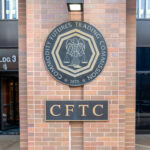Kalshi hits US$5 billion valuation after latest financing round

Prediction market Kalshi has raised US$300 million during a Series D funding round, valuing the prediction platform at US$5 billion, according to The New York Times.
The valuation comes after the prediction market achieved unicorn status in June after its Series C round, which valued the group at just more than US$2 billion.
Venture capital firms Sequoia Capital, CapitalG, Coinbase Ventures, and Paradigm were listed as investors in the latest round, along with a new investor in Andreessen Horowitz.
Kalshi also hinted at its expansion plans, with the platform expecting to market to customers from more than 140 countries. This expansion comes as Kalshi is on course to hit US$50 billion in trading volume, up from the US$300 million the platform generated the previous year.
With this level of growth, Kalshi also maintains its market leader position, after overtaking rival prediction market platform Polymarket last month. According to figures posted by data provider Dune, Kalshi holds a market share of more than 60%.
In an interview with The New York Times, Kalshi Co-Founder and Chief Executive Officer Tarek Mansour said the prediction site never “expected this level of growth.”
It also comes on the back of Polymarket’s recent US$2 billion investment from New York Stock Exchange owner, Intercontinental Exchange, placing the prediction platform at a US$8 billion valuation.
Charlotte Capewell brings her passion for storytelling and expertise in writing, researching, and the gambling industry to every article she writes. Her specialties include the US gambling industry, regulator legislation, igaming, and more.
Verticals:
Sectors:
Topics:
Dig Deeper
The Backstory
How a niche bet became a financial thesis
Prediction markets have edged from crypto curiosity to a contested corner of U.S. finance. The shift accelerated as platforms framed “event contracts” as tradable information rather than wagers, attracting blue-chip capital and regulatory scrutiny. Kalshi’s June financing at a US$2 billion valuation established venture validation after years of legal battles. Four months later, the company vaulted to a reported US$5 billion valuation on a US$300 million Series D, with Sequoia, CapitalG, Coinbase Ventures, Paradigm and Andreessen Horowitz participating, and with ambitions to market in more than 140 countries as volume races toward US$50 billion. That leap, first reported by the New York Times, underscored a narrative that event-driven trading could rival polling and traditional derivatives as a forecasting tool. The escalation has unfolded alongside a rival’s rapid rise: Polymarket, which retooled its structure to reenter the U.S. and attracted Wall Street distribution.
The scale on both sides rests on a simple pitch to users and institutions: prices reveal probabilities when capital is at risk. Critics counter that structure masks gambling under a financial wrapper. This tension has defined the sector’s path into the mainstream and now shapes its governance, product design and investor base.
The court decision that reset the rules
The legal inflection point came when a Washington, D.C., federal judge cleared Kalshi to list contracts tied to U.S. elections despite a regulator pushback. Weeks later, the Commodity Futures Trading Commission dropped its appeal, ending a high-stakes standoff. In doing so, the agency removed the immediate legal cloud over election markets at Kalshi, though it preserved policy concerns voiced by financial reform groups. The turnabout, chronicled in coverage of the CFTC’s voluntary dismissal, followed years in which Kalshi pursued a by-the-book exchange model and litigation strategy to bring political and macroeconomic outcomes under federal derivatives rules rather than state gambling regimes.
Kalshi’s courtroom win dovetailed with rising user interest in event contracts during and after the 2024 presidential campaign. The company argued that regulated markets can improve public forecasting by aligning incentives and transparency. Its critics warned that election contracts risk undermining democratic norms. That unresolved policy debate now plays out state by state, even as federal litigation favored Kalshi.
Rivals, capital and a data land grab
The competitive map shifted when Polymarket aligned with the owner of the New York Stock Exchange. Intercontinental Exchange pledged a US$2 billion investment into the platform, valuing it at US$8 billion, and agreed to distribute its event-driven data as Polymarket prepared a U.S. return through a CFTC-regulated vehicle. The tie-up, detailed in coverage of ICE’s backing, gave prediction contracts a legacy-market endorsement and positioned probabilities as a sellable analytics product for institutional clients. ICE, with a market value above US$90 billion, has scale to commercialize that data. For context on ICE’s size and investor profile, see key statistics compiled by Yahoo Finance.
Polymarket had already been circling a US$200 million round led by Founders Fund at a valuation north of US$1 billion, and it drew interest from political-adjacent capital as well. Reuters reported an earlier injection by 1789 Capital, backed by Donald Trump Jr., signaling crossover attention from ideological investors to infrastructure-focused incumbents. That context is captured in Reuters’ reporting on the 1789 Capital stake.
Kalshi, for its part, leaned into market-share gains while building a global footprint. It told investors it had overtaken Polymarket, citing a more than 60% share, per Dune Analytics dashboards, and was pacing to a step-change in trading volume. The latest round, first disclosed in the New York Times’ DealBook, positioned Kalshi as the sector’s revenue and compliance standard-bearer after its court victory. The arms race now runs on three fronts: capital to scale liquidity, licenses to widen product shelves and distribution deals to monetize market-implied probabilities.
State pushback and the compliance maze
Federal leniency did not end state-level friction. Nevada regulators sent a cease-and-desist to Kalshi, asserting that event-based contracts on sports and elections are unlawful in the state absent Gaming Control Board approval. The warning, summarized in coverage of Nevada’s enforcement letter, set a March 14, 2025 deadline and threatened criminal and civil penalties for willful violations. The board also emphasized that even licensed sports pools cannot book election wagers. The episode followed a separate CFTC intervention that halted a planned Robinhood launch of sports contracts connected to Kalshi during Super Bowl LIX weekend.
Those moves highlight the sector’s jurisdictional complexity. Platforms that lean on federal derivatives law to list national political or macroeconomic outcomes still face state restrictions on wagering-like activity and marketing. Even as a D.C. court opened one lane for election contracts, state gaming authorities may assert their own prerogatives on what constitutes gambling. For operators, the operational takeaway is clear: segment products by jurisdiction, keep know-your-customer controls tight and prepare to litigate definitions of “event contract” in multiple forums.
Elections, economics and the new benchmark
The business stakes extend beyond trading fees. Both major platforms are racing to turn crowd-sourced probabilities into a benchmark for risk management across finance, media and politics. ICE’s data distribution pact with Polymarket suggests a path to institutional adoption, where traders integrate event odds into pricing for rates, energy and equities. Kalshi is pushing a similar thesis from a regulated-exchange base, betting that standardized contracts tied to CPI prints or policy moves can hedge exposures that traditional futures leave uncovered. The company’s recent step-up in valuation, as reported by the Times and covered in follow-on reporting of the US$5 billion round, reflects investor confidence that event pricing can become an investable asset class.
Still, legitimacy hinges on governance. Platforms must police manipulation, manage conflicts when political actors trade and demonstrate resilience under news shocks. They also need to prove that informational efficiency outweighs social costs in contentious markets like elections. That calculus will shape whether regulators expand permitted categories or narrow them after review cycles.
What to watch next
Three signals will set the tone. First, liquidity migration between platforms after high-salience events will reveal how sticky users are when fees, UI and jurisdictional access vary. Second, data partnerships will test whether event-derived probabilities can command subscription economics beyond retail traders. Third, regulators will define the perimeter contract by contract, with states like Nevada acting as early hard stops and federal agencies reserving the right to revisit public interest determinations.
In the meantime, the market is consolidating around two models: Kalshi’s federally regulated exchange, emboldened by a court win and fresh capital, and Polymarket’s distribution-led network boosted by ICE and venture backers. Whether that duopoly endures will depend on who converts trading into durable, saleable data and who navigates the patchwork of U.S. law while scaling abroad.








